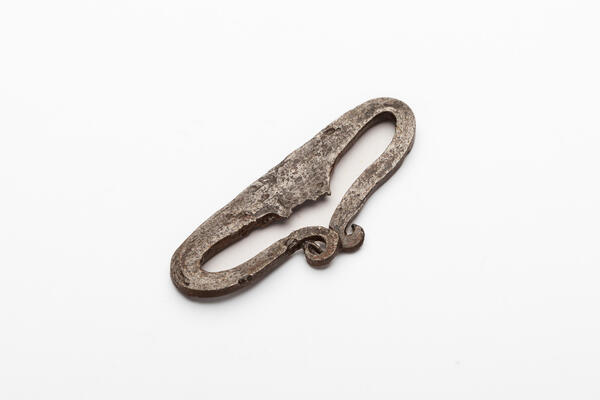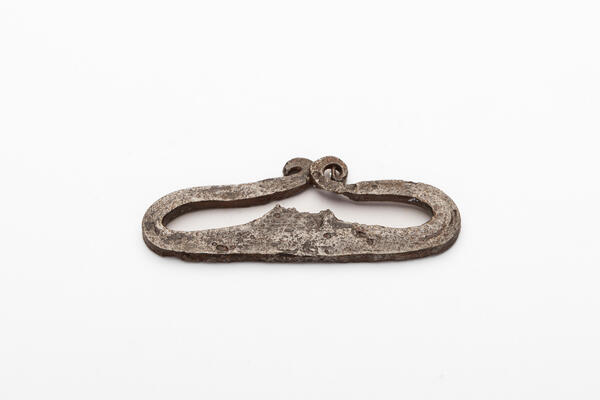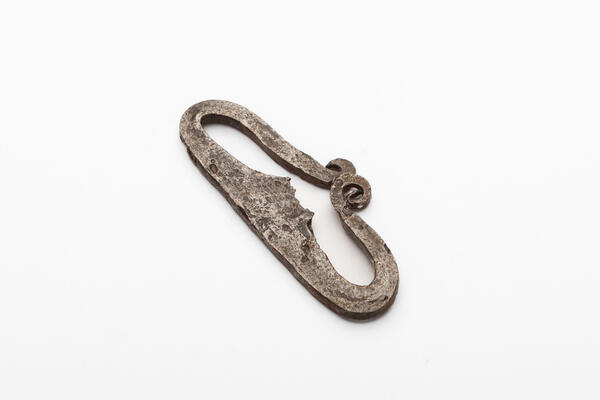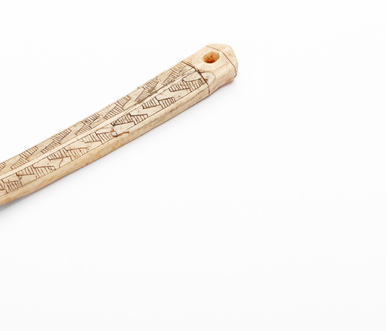A fire striker with a zoomorphic openwork handle was accidentally found in the Omutnitsa burial ground in Udmurtia in 2009. Medieval fire strikers were usually C-shaped, while those with outlines that resembled animals were considered prestigious and high-status items.
Fire strikers made of copper alloys appeared around the 10th century on the territory of the Perm and Udmurt Cis-Urals. An old riddle says: “The fire slept in the stone, the iron woke it up, the fire walked on wood — flew like a falcon”. It explains through metaphor the process of striking fire by using a flint.
A tinderbox was a common household item and was widespread until the advent of matches in the late 19th century. A tinderbox consists of flint, tinder and a fire striker. People always had all these items at hand in a special wallet or bag, attached to their belts.
The Russian word for a fire striker is “kresalo” (also kresilo, kromsalo, rezalo and tesalo), which was derived from the Russian verb “kresat” meaning to cut or to shred. This is a strip of hardened steel that, when struck against flint, shreds fine chips. Due to the friction of the metal surfaces, the temperature rises sharply, and hot chips ignite instantly from coming into contact with oxygen. Modern lighters work using the same principle.
Tinder is made of any material that can easily catch fire — rags, birch bark, dried grass or pine needles. With tinder and a fire striker, it was possible to start a fire in any conditions.
Throughout history, people revered fire and treated it with respect and awe. It was a symbol of vitality and strength. The fire obtained with the help of flint and steel was considered especially benevolent. It brought happiness and prosperity to the household.
In medieval settlements, there was a whole set of instructions on how to handle such fire so as not to anger, offend or tarnish it. It was impossible to spit on the fire, throw garbage or filth into it, tread or extinguish it, since the fire could take revenge by burning dwellings or sending a disease. The fire could only be blown out or left alone to burn itself out.





